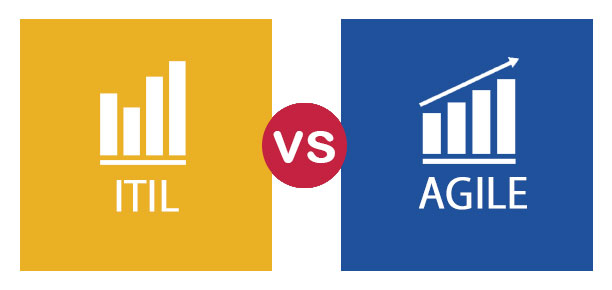
Information Technology Infrastructure Library (ITIL) and Agile methodologies are two popular approaches for managing IT projects. While ITIL focuses on service management and providing a framework for delivering IT services, Agile methodologies prioritize flexibility, collaboration, and delivering working product . Both approaches have their strengths and limitations, and organizations often struggle to choose between the two. In this paper, we will explore how ITIL and Agile can be integrated to leverage the strengths of both and deliver successful IT projects.
Overview of ITIL:
ITIL is a framework of best practices for IT service management. It provides a set of guidelines for IT processes, such as incident management, problem management, change management, and service desk management. ITIL helps organizations to establish a structured approach to IT service delivery and improve the quality of their IT services.
Overview of Agile:
Agile is an iterative and collaborative approach to development. It emphasizes the delivery of working product features in short iterations, collaboration between developers and stakeholders, and the ability to respond to changing requirements. Agile methodologies, such as Scrum and Kanban, have gained popularity in recent years due to their flexibility and ability to adapt to changing market conditions.
Integration of ITIL and Agile:
While ITIL and Agile methodologies seem to be at odds with each other, they can be integrated to deliver successful IT projects. Here are some ways in which ITIL and Agile can be integrated:
- Prioritizing Service Delivery:
ITIL focuses on delivering high-quality IT services to customers. Similarly, Agile methodologies prioritize the delivery of working products that meets customer needs. By integrating ITIL and Agile, organizations can prioritize service delivery while also delivering products quickly.
- Agile Service Management:
Agile Service Management (ASM) is a framework that combines Agile methodologies with ITIL processes. ASM helps organizations to manage their IT services in an Agile way. It allows IT teams to respond quickly to changing business needs while maintaining the quality of their IT services. ASM includes practices such as backlog management, service catalog management, and continuous improvement.
- Continuous Delivery:
Continuous delivery is a practice in Agile methodologies that emphasizes the continuous delivery of working product features. By integrating ITIL with Agile, organizations can ensure that the product delivered is of high quality and meets customer needs. Continuous delivery also helps to reduce the time between development and deployment, enabling organizations to respond quickly to changing market conditions.
- DevOps:
DevOps is a set of practices that combines software development (Dev) and IT operations (Ops). It emphasizes collaboration and communication between development and operations teams. DevOps also includes practices such as continuous integration, continuous delivery, and automated testing. By integrating ITIL with Agile and DevOps, organizations can streamline their IT processes and deliver high-quality software quickly.
Conclusion:
ITIL and Agile methodologies have their strengths and limitations. By integrating ITIL with Agile, organizations can leverage the strengths of both approaches and deliver successful IT projects. ITIL provides a structured approach to IT service management, while Agile methodologies prioritize flexibility and collaboration. By combining the two, organizations can prioritize service delivery while also delivering products quickly. Integration of ITIL and Agile can be achieved through practices such as Agile Service Management, continuous delivery, and DevOps. Ultimately, the success of IT projects depends on the organization’s ability to adapt to changing market conditions and deliver high-quality products quickly.
Comments are closed